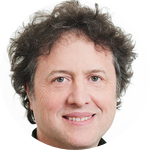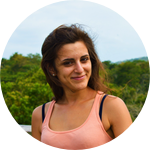About This Project
Migrating is strenuous for birds. Therefore, they need to find energy-saving strategies, such as flying in a V-formation. In a V-formation, birds take advantage of the up-wash produced by the preceding bird. Yet, the trailing bird does not get any benefit, hence birds switch their positions inside the flight formation. I hypothesize that every individual contributes to the flying effort and hence there is a pattern in the switches, which may be also affected by social relationships.
Ask the Scientists
Join The DiscussionWhat is the context of this research?
Previous studies have proposed that flying in a V-shaped formation may be an energy-saving strategy. In a V-formation, a trailing bird can benefit from the up-wash produced by a preceding bird by flying in its wake. However, the leading bird does not experience any benefit. Indeed, birds change their positions inside the formation, so eventually every individual could take advantage of the in-wake flying. This constitutes a cooperation dilemma and raises some questions: what is the pattern of position switches inside the formation? How does this cooperation work? Do social relationships among individuals play a role?
The human-led migration by Waldrappteam offers a unique opportunity to study these aspects of V-formation during migration flight.
What is the significance of this project?
Migration constitutes a great effort for birds, with incredibly high energetic costs and an consequent increase in mortality rates. Therefore, saving as much energy as possible during migration flights could make the difference between survival and death. V-formation represents one way to save energy while flying. Due to the development of more advanced technologies, we can now investigate how the birds achieve this. Moreover, it is possible to study if all the individuals benefit of the formation at the same level and if sociality among individuals plays a role.
Equipping all the birds of a flock with high-precision GNSS loggers will allow to have a better understanding of this processes.
Indeed, the human-led migration by Waldrappteam is an unique occasion to conduct this study.
What are the goals of the project?
I will use the funds to buy custom-made high-precision GNSS loggers. These loggers are able to collect raw carrier-phase data from several satellite constellations. This data allows me to calculate the position of the birds in the V-formation with cm-level accuracy. My goal is to equip all the birds taking part to the migration with one of these loggers to study: the extent to which the birds use the V-formation, the pattern of switches among individuals inside the formation and the effect of social relationships among individuals on the pattern and on the V-formation. My hypothesis is that V-formation is largely used during migration and that al the individual contribute to the flying effort. Moreover, social relationship may have a role in establishing the pattern of swithches.
Budget
I will use these funds to buy 11 high-precision GNSS loggers. I will fit them to Northern bald ibises on their first human-led migration. The loggers are custom-made and highly miniaturized. Each one contains a GNSS antenna, U-blox GNSS receiver, accelerometer, flash memory and a LiPo battery. Integrating all these components and making it light is a challenge.
The data collection of last year was not successful as the loggers were not sensible enough for high-precision GNSS. Therefore, I need to buy a complete new set of loggers, which will allow me to track the position switches among individuals in the formation. For this purpose, it is vital for me to find some external funds.
My project is funded by the Austrian Science Funds and it is part of a conservation project lead by Waldrappteam, co-financed by the European Union under the Life+ program and various donors (see note “Conservation project”).
Endorsed by
 Project Timeline
Project Timeline
The main data collection will be in the summer and by then the loggers must be designed, tested and working. I will start collecting data towards the end of July 2019 and finish with the end of the migration (variable). In October I will have some preliminary results, whereas more elaborate results will take till February 2020. If necessary, a second data collection will be done in summer 2020.
I will publish all the updates using Lab notes, keep it checked!
Mar 25, 2019
Project Launched
Apr 15, 2019
Design of the loggers
May 20, 2019
Test of prototypes, data shared with backers the outcome
Jun 01, 2019
Buying the loggers
Jul 25, 2019
In the field. Further testing of the loggers and collecting some data during training of the birds. Some visual and very preliminary data can be shared.
Meet the Team
Affiliates
Elisa Perinot
I am an evolutionary biologist, interested in animal behaviour. Currently, I am a Ph.D student at the University of Veterinary Medicine in Vienna and part of the conservation project lead by Waldrappteam. I am studying cooperative behaviour in Northern bald ibis (Geronticus eremita) and V-formation during migration flights. In particular, I focus on the effect that sociality among the individuals can have on the temporal pattern of switches inside the flight formation. I am doing this using high-precision GNSS loggers during flights combined with behavioural observation on the floor.
I received a Bachelor of Science Biology and a Master of Science in Evolutionary Biology at the University of Padua, Italy. I studied cooperative behaviour in Chimpanzees and the courtship behaviour in the Golden-collared manakin. I started collaborating in this last project for my master thesis and I have been working on it for over two years now (as a side project, since I have my Ph.D). It gave me a lot of experience in collecting data in the field (Panamanian rainforest), in analysing and problem solving processes and in writing. Above all, it made me understand my passion for behavioural biology and and it nurtured my enthusiasm for studying animal behaviour under natural condition in the field.
I am at the beginning of my research career and so far I have co-presented a poster at a conference and I will present my own project in a couple of months. At the moment I am writing my first paper as a co-author.
Additional Information
.jpg)
Project Backers
- 25Backers
- 28%Funded
- $1,245Total Donations
- $49.80Average Donation


